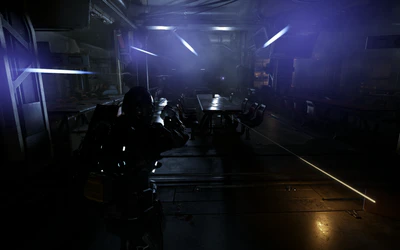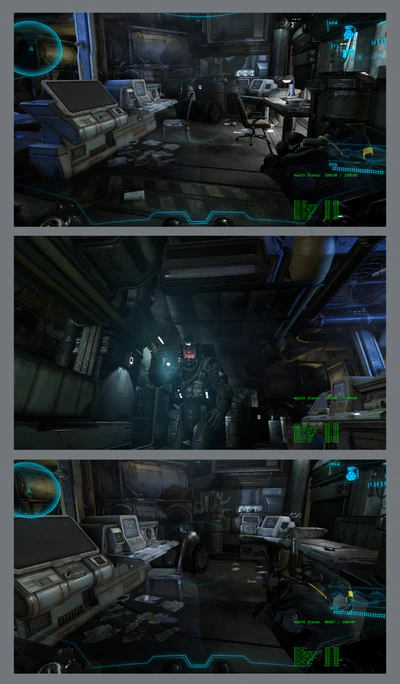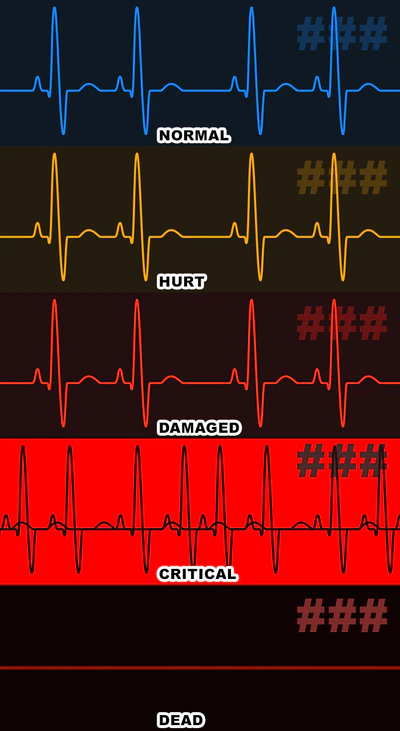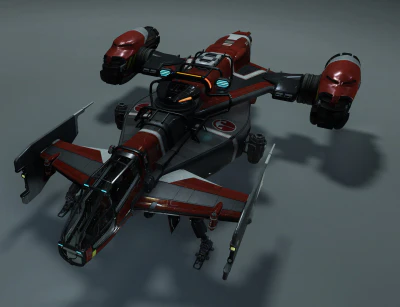 | |||||||||||||||||||||||||||||||||||||||
| Healing Your Spacemen | |||||||||||||||||||||||||||||||||||||||
|---|---|---|---|---|---|---|---|---|---|---|---|---|---|---|---|---|---|---|---|---|---|---|---|---|---|---|---|---|---|---|---|---|---|---|---|---|---|---|---|
| Series | Design | ||||||||||||||||||||||||||||||||||||||
| Type | Transmission | ||||||||||||||||||||||||||||||||||||||
| ID | 14318 | ||||||||||||||||||||||||||||||||||||||
| Published | 2014-11-21 | ||||||||||||||||||||||||||||||||||||||
| Source | Healing Your Spacemen | ||||||||||||||||||||||||||||||||||||||
| In the series | |||||||||||||||||||||||||||||||||||||||
| |||||||||||||||||||||||||||||||||||||||
Greetings Citizens,
Early in Star Citizen’s development, we laid out Chris Roberts’ vision for a new, more interesting system of character death. You can read all about it in Death of a Spaceman, but the gist is that our game aims to treat dying very seriously. To make Star Citizen’s world immersive and engaging, we crafted a high level design for a system that attempts to treat player death as more than just a ‘respawn and then continue playing’ moment. It’s possible to survive the destruction of your ship, to survive your battle wounds… but it’s also possible to lose your character permanently.
Until recently, Star Citizen’s death mechanic was a broad concept. Something we intended to put into play when the persistent universe launches, not something we needed to engineer for the Hangar Module or Arena Commander. With the upcoming First Person Shooter module, that changes significantly. A key portion of any FPS is the health system, which connects directly back to player death. Think back to classic FPS’ you have played. There have been countless iterations on player health and death, from picking up med kits in Wolfenstein to passing periodic regeneration chambers in Bioshock to the ‘rest and heal’ mechanic in the Call of Duty series. The challenge for the team at Illfonic became: how do we express Chris’ goals regarding player death through the FPS health system? The balancing act between realism and fun is important but what is more important is staying true to the vision. We want every firefight to matter and we want the player to feel both a sense of triumph in victory and the consequences of defeat.
In the end, the team decided to run counter to the standard FPS mechanics of regenerating health and instantly respawning on death to make every fight a calculated decision that can have ramifications that impact your character and place in the ‘Verse. What follows are the FPS health mechanics as we have implemented them; like much of Star Citizen, we’re excited to break from the norm and try something we believe to be extraordinary!
CHARACTER HEALTH
For health, we have devised a limb-based system with varying degrees of severity, permanence and reaction that we feel makes FPS combat more tactical and interesting.
Keeping in the spirit of total immersion, limb damage is a serious issue in FPS combat. All parts of the body have their own health. What this means is that there is no “overall health”; instead, ten different parts of the body (called limbs, detailed below) track their own data and impact the total for each Citizen. The amount of damage an individual limb suffers can be modified by other factors, such as armor and even environment. For instance, having armor on a particular limb will reduce the damage effect. There are 4 levels of health to each limb, each of which impacts how your character controls (what they are capable of, their response time and so on.) These are:
- Normal – You are fit and ready to fight!
- Hurt – Hurt limbs can cause problems with aiming, walking, or other functions that would require that limb. Limbs can get hurt from being too close to an electric spark, flame, outer explosion, or being hit with objects in the environment. Light Armored players can quickly be hurt.
- Damaged – Damaged limbs are useless and the player cannot use them unless they get them patched up in the field or taken to a mobile trauma system (see: Healing). This is the state right after the hurt phase, where the pain is so severe to the player, that no matter what limb is damaged, they will have a hard time being mobile. If one of their legs are damaged, they fall to the ground and crawl.
- Ruined – Limbs in this phase are essentially gone. The player will most likely bleed out at this state. This is usually something as bad as your arm being blown off. If the ruined limb is an arm then you will not be able to aim any weapons that require it. For example two handed weapons require both arms to be outside the Ruined state. Screen effects are also present to simulate the pain the player is enduring in this state. If the player is able to be healed by a player with medical equipment, the limb is completely gone and cannot be used, but the player can at least move around and continue the fight (if they have their legs, that is!)

LIMBS
In the current system, there are 10 Limbs that can receive isolated damage.
- Head
- Torso
- Right Upper Arm
- Right Lower Arm
- Left Upper Arm
- Left Lower Arm
- Right Upper Leg
- Right Lower Leg
- Left Upper Leg
- Left Lower Leg
Limb damage is measured as a percentage, with Normal being a limb at 90% or greater, Hurt is between 90% and 50%, Damaged is 50% to 1% and Ruined is 0%. Limbs will transition between the three states of damage based on the amount of health the limb has remaining. Modifiers, such as armor or atmosphere, also impact the base health numbers.
IDENTIFYING LIMB DAMAGE
There are many ways limb damage can be identified. These are just a few.
Visual – Damage to limbs will normally be observable by players; taking a hit will call out a damage state in much the same way as our ships.
Helmet HUD / mobiGlas – When a Limb changes state, an icon of the limb flashes on the screen to its current state. This is only available if you have a biometric suit attachment for your mobiGlas or your armor suit has biometric monitoring.
Gadget – Some gadgets will allow players to track their limb damage state, including medical devices or other HUD devices.
If you are not wearing the appropriate gear, you may not have a fancy status indicator keeping your character up to date with you’re the state of your health. It will be critical for you to pay attention to other signs such as shortness of breath, limping, loss of limbs, tunnel vision and other signs. If your character is bleeding out, you will fall limp, in such agony that you are unable to move. If you are wearing the appropriate gear, you might be able to track your characters status better.
These charts represent an example of how you may see your characters overall health status. Each state is more violent and color coded for easy recognition.
While you can track limb damage visually, you won’t have the specific medical information available from a dedicated scanner… but when you take a hit to your body in Star Citizen, you’re going to be able to see it! (And so will everyone else.)

HEALING
For our equivalent of respawn (when permadeath is avoided) we wanted a system that makes players want to avoid dying: no simple reappearing a few meters from your body!
The concept is simple. In the world of Star Citizen it’s pretty hard to instantly kill a player, instead he’s likely to take heavy limb damage, incapacitating him until a friendly player manages to drag him to safety and apply some medical aid. If a player has his critical limb damage healed up to at least a Hurt level then he can get back up and re-enter combat. Of course if no one comes to the aid of a downed comrade and the opposing side gets there first they have the choice to make sure their enemy is out of action… Or they could be more humane and capture the wounded combatant!
It’s important to mention again, that with this system we’re avoid the current trend of hiding behind cover for blood to clear off your screen and jumping back in the fight ready for more. Aside from the realism aspect, we are really excited at the prospect that this could promote much more teamwork between your allies, since you would be much more reliant on their help if you suffer a Damaged wound as well as promoting much a more calculated approach to tactics, being careful not to spread your forces too thin.
There are also only so much healing one body can take, each time a temporary battlefield med device is used the ability to repair that limb becomes less and less. After a point, there is nothing more than can be done other than taking the fallen comrade to a proper hospital to be fully healed, or risk him dying from his wounds.
This diagram focuses on the lower right arm and it’s various states:

PLAYER DRAGGING
If you or your teammate are unable to move (limbs are ruined or close to) a teammate can help by dragging that person out of the battle or to a medical pod. This is a context sensitive action that will drag players based on grabbing them at the shoulders. While being dragged, a player will lose his input abilities. The one exception would be if your legs are ruined but you are not bleeding out, in this case you would still have control over aiming while being dragged.
A player being dragged can exit being dragged with a counter-context sensitive action in case they don’t want to be moved. After the player being dragged aborts the drag, there is a short cool down before they can be dragged again.
MOVEMENT
There are four ways players can be dragged:
- Laying on their back, being dragged by their shoulders
- Laying on their back, being dragged by their feet
- Laying on their stomach, being dragged by their shoulders
- Laying on their stomach, being dragged by their feet
The player doing the dragging uses both hands to pull the wounded player.
MEDICAL DEVICES

There will two types of ways for players to be healed through field tech and intensive systems that can only be provided by medbays or medstations. In short, if you are in a combat area, you cannot be healed to your full capacity. When seriously injured, you must take your character through the process of proper recovery.
Field tech are gadgets that can be carried by players or NPC’s that are capable of providing temporary healing for a variety of wounds. They will nullify pain, stop bleeding, restore vital systems and calm body systems to states where the person can function again. Gadget aids cannot rebuild tissue, but can provide enough white blood cell replacements to heal up small wounds at an extremely fast pace.
One such example is the DYNAPAK from CureLife which is a complete multi-function individual first-aid system designed and constructed for the rigors of field use. With CureLife’s proprietary serum, a single DYNAPAK will promote healing in non-serious wounds to get you back on your feet.
Intensive systems are medical services that can only be found in medbays and hospitals. Capable of handling much more serious wounds, they are full-size medical immersion chambers, outfitted with technology to rebuild tissue, replace blood and perform other operations through advanced 3d printing technology. There are even new systems such as the Calliope that are capable of completely reconstructing a person’s appearance.
Your players overall health status is essentially the state of all of your limbs combined. As each limb goes through their various stages, your overall health status can quickly change. Your health status does not change linearly, as it can quickly become fatal at an exponential rate. For instance if it is your Head there’s not much a med device can do for you!
BLEED OUT
Bleeding out is your character’s enemy. If you are bleeding out, you are probably done for. But there is still hope! Paying attention to your health status is critical.
If a player takes a lot of damage to a limb in one blow, the damage doesn’t affect the player’s total Health Status right away. Instead a portion of the damage to the limb eats away at your Health Status over time. This is to simulate the idea that you don’t die in a single blast, you ‘bleed out’ over time. Upon taking this type of damage, the player will then begin to bleed out at a set rate, giving them a limited amount of time to live unless they get to a medstation or a friendly player uses a med device on them. If the player takes more massive amounts of damage to a specific limb in one blow, it follows a similar formula but at much larger scale. It is important to note that in a heavy Bleed Out state the player will have no ability to aim a weapon as the pain is just too severe.
BRING IN THE STARSHIPS

What is Star Citizen without ships? As you know, the FPS module is being designed to support the existing focus on starship combat rather than to replace it. So how do the two mechanics complement each other? The answer is that there is a significant amount of strategy involved!
Star Citizen’s spaceflight will include a robust ‘rescue’ system. Search and rescue missions are one of our major ‘umbrella’ mission types: players will be called upon to rescue both NPCs and players who find themselves shot down or otherwise stranded in space. Using the same systems outlined above, players can suffer injuries during space combat… and there’s no more likely place for this to occur than during ejection/ship destruction.
Imagine following a distress beacon to a downed pilot floating in space. You put on your EVA outfit, vent your atmosphere and exit your ship to rescue them. Pulling the player aboard, you find they’ve taken a laser blast to the arm, or a mass driver to the chest. Here, the FPS healing mechanic again takes place and you must stabilize them for the trip to a hospital facility.
Unless you are carrying that hospital facility with you! A number of Star Citizen ships have already been revealed to have medical bays onboard or as options and more are in the works. There’s even a large dedicated hospital ship in the fourth wave of ship designs, which will allow even more player recovery (and which will possibly even act as a mobile respawn spot for not-quite-permadead Citizens.)
Carrying a medical bay is a strategic expense: you lose cargo space and energy to support the facilities… but if you’re interested in recovering other pilots and getting them back into action quickly, it’s the way to go! We expect a great deal of emergent gameplay here: pirate groups conducting raids may have a ‘healer’ Cutlass Red (or similarly outfitted ship) accompanying them to make sure that individual team members can get back to the fight quickly and effectively.
GOING FORWARD
While it seems complicated (at the very least different) we feel strongly that the system we have created best first Star Citizen and Chris’ vision for the universe. As we said at the beginning we want every combat scenario to matter. It is important to note however that a skilled player will be able to thrive in our combat system and use the way health works to their advantage.
The FPS combat in Star Citizen is another important step in the evolution of the game. We think our health system is fresh and while it may force the user to play a little differently than they are used to, the experience and pure fun it allows is something special. It may take a while to wrap your head around how the health system works but we guarantee you have never seen anything like it. We wanted to create a smart and special system for a smart and special game.
END TRANSMISSION
DISCLAIMER: As with any design post, this article represents our current thinking for the systems covered. All content is subject to change as a result of testing. The numbers provided here represent data that is current as of publication, but which will likely be altered in a number of ways before launch to create the best possible Star Citizen experience. Note also that while this system is being developed now, aspects of it relating to permadeath or long term character impact will not be available in the near term FPS module.